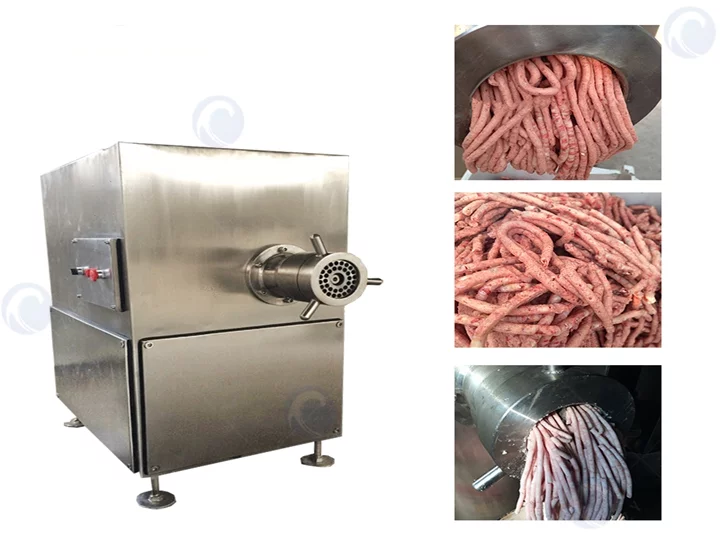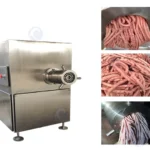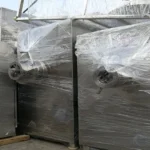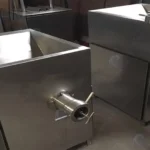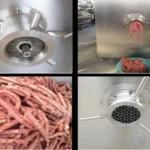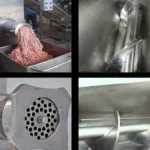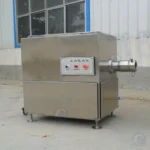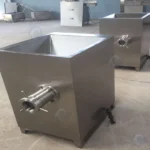자동 미트 그라인더
| 모델 | TZ-100 |
| 용량 | 300-500kg/h |
| 전력 | 5.5kw |
| 전압 | 380v, 50hz |
| 무게 | 190kg |
| 크기 | 900*600*960mm |
이제 저희 프로젝트 관리자에게 기술 세부 정보를 요청할 수 있습니다
육류 분쇄기는 신선한 고기와 냉동 고기를 사전 해동 없이 효율적으로 처리할 수 있어 고기의 자연적인 맛과 영양소를 유지하는 데 도움을 줍니다. 처리 용량이 500kg/h에서 3000kg/h까지인 이 분쇄기는 중간에서 대규모 운영에 완벽하게 적합합니다.
내구성이 뛰어난 스테인리스 스틸 구조로 제작되었으며 고성능 모터로 구동되는 이 기계는 위생적이고 장기적으로 사용할 수 있으며 청소하기 쉽습니다. 다양한 입자 크기로 고기를 분쇄할 수 있어 소시지, 미트볼, 버거 패티 등 다양한 용도에 적합합니다.
신뢰성과 다재다능성 덕분에 육류 분쇄기는 육류 가공 공장, 상업 주방, 식품 생산 시설에서 널리 사용되며 전문적인 사용을 위한 고출력 솔루션을 제공합니다.
육류 분쇄기 응용
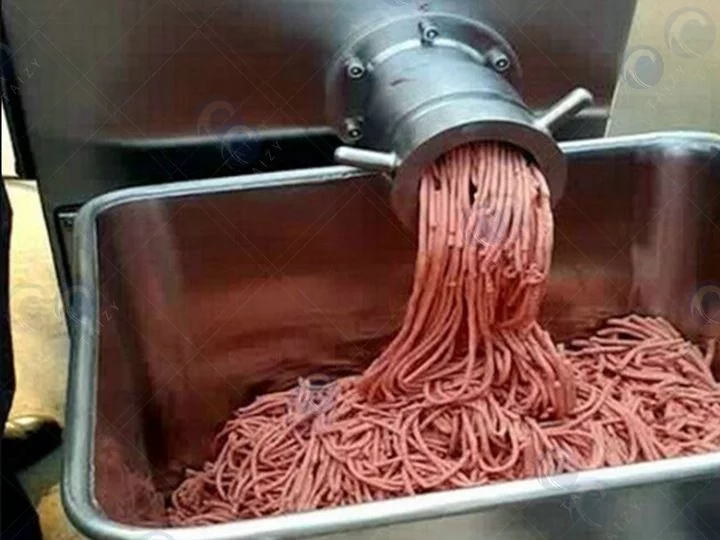
육류 분쇄기 기계는 소시지, 햄, 미트볼, 점심용 고기, 애완동물 사료 및 기타 다진 고기 제품을 생산하기 위해 식품 가공 산업에서 널리 사용됩니다.
신선하거나 냉동된 고기를 효율적으로 분쇄하여 육류 가공 공장, 식당, 정육점 및 애완동물 사료 제조업체에 필수적입니다.
육류 분쇄기 구조
- 작동 나사. 고강도 스테인리스 스틸로 제작되어 내구성이 뛰어나고 변형에 저항합니다.
- 압축 챔버. 고기를 분쇄하기 위해 담고 고르게 압력을 보장합니다.
- 압출 슬리브. 고기를 분쇄 과정으로 안내합니다.
- 호퍼. 분쇄 전에 원재료를 보관합니다.
- 배출 포트. 분쇄된 고기를 부드럽게 출력합니다.
- 모터. 효율적인 분쇄를 위한 안정적인 전력을 제공합니다.
- 유니버설 바퀴. 필요에 따라 기계를 쉽게 이동할 수 있습니다.
- 주요 칼날 받침대. 절단 날을 단단히 고정합니다.
- 케이싱. 내부 구성 요소를 보호하고 안전을 보장합니다.
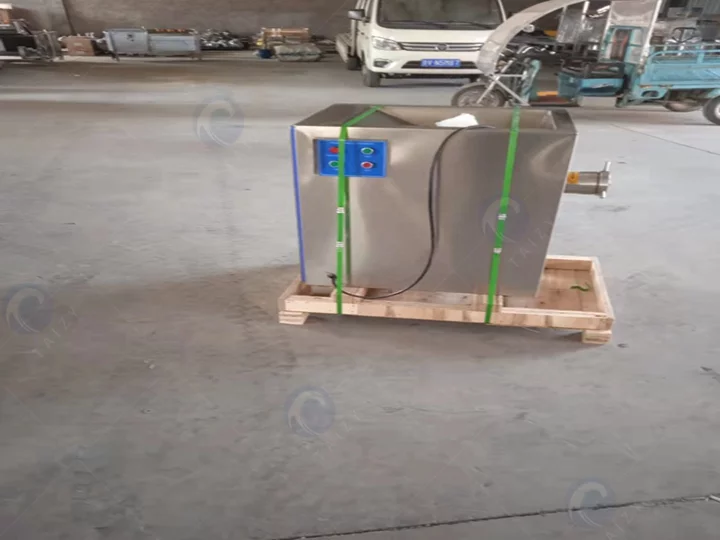
육류 분쇄기 주요 특징
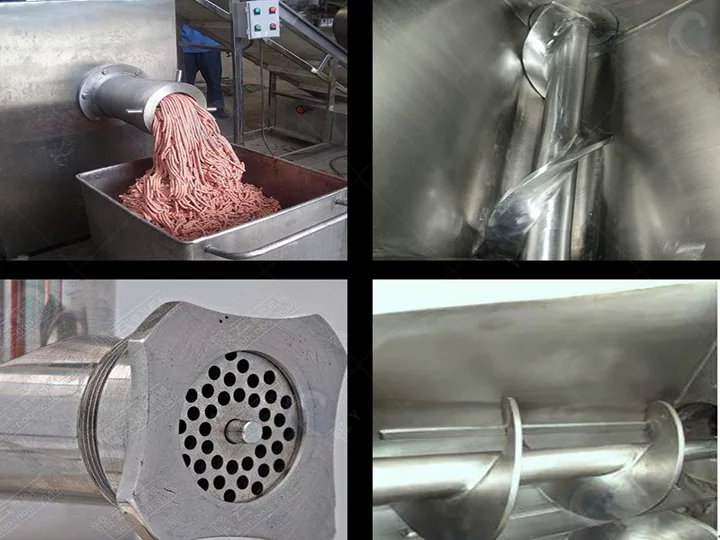
- 모터는 힘든 고기 조각이나 큰 고기 조각도 빠르고 효율적으로 분쇄할 수 있는 강력한 성능을 제공합니다.
- 조정 가능한 속도 설정을 통해 맞춤형 분쇄가 가능하여 필요에 따라 더 미세하거나 거친 질감을 제공합니다.
- 역방향 기능은 나사의 방향을 반대로 하여 막힘을 빠르게 제거합니다.
- 여러 개의 구멍이 뚫린 다이 플레이트를 통해 분쇄된 고기 입자의 크기를 정확하게 조절할 수 있습니다.
- 이 다재다능한 기계는 냉동 고기 분쇄를 포함한 다양한 작업을 처리하여 생산 효율성을 높이고 노동력을 줄입니다.
- 신속한 분쇄는 열 축적을 최소화하여 고기 제품의 신선도를 유지하고 유통 기한을 연장합니다.
- 모든 구성 요소는 엄격한 위생 기준을 준수하기 위해 식품 등급 스테인리스 스틸로 제작되었습니다.
- 이 기계는 원재료를 일관된 입자 크기의 충전재로 효율적으로 가공하여 다양한 생산 요구에 부응합니다.
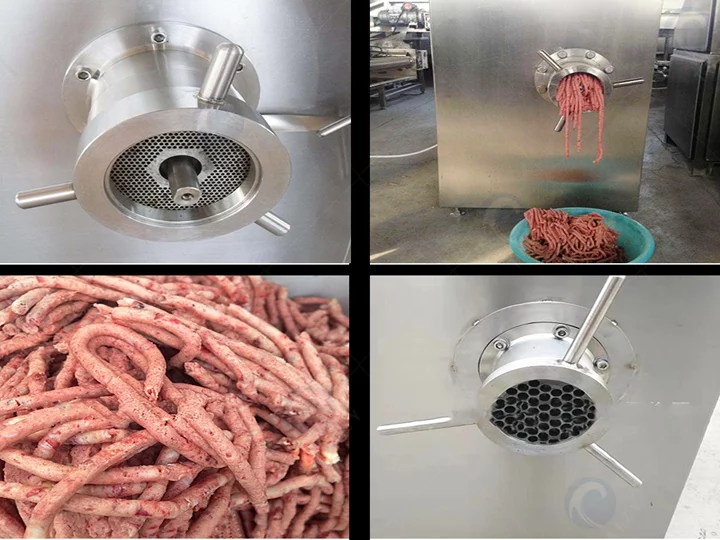
육류 분쇄기는 어떻게 작동합니까?
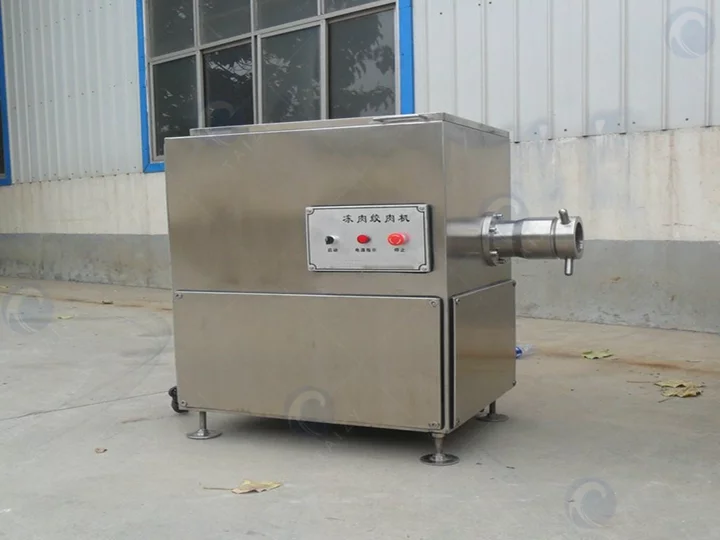
- 고수를 분쇄하기 전에 과도한 지방을 다듬고 뼈를 제거하여 준비합니다.
- 분쇄판과 날을 단단히 고정하여 분쇄기를 조립합니다.
- 준비된 고기 조각을 호퍼에 넣고 가능한 경우 식품 푸셔를 사용하여 안내합니다.
- 기계를 켜서 나사를 활성화하여 고기를 절단 날 쪽으로 밀어 분쇄합니다.
- 다양한 구멍 크기의 분쇄판을 선택하여 분쇄의 굵기를 조절합니다.
- 분쇄된 고기가 분쇄기를 나오는 대로 모아 요리 또는 추가 가공을 준비합니다.
미트 그라인더의 유지보수
- 정기적인 청소. 사용 후마다 분쇄기를 분해하고 분쇄판, 칼날 및 나사를 중심으로 모든 분리 가능한 부품을 따뜻한 비눗물로 씻으십시오.
- 잔여물을 즉시 제거하십시오. 고기나 음식 잔여물을 신속하게 청소하고, 고집스러운 잔여물은 청소하기 전에 따뜻한 비눗물에 담가 두십시오.
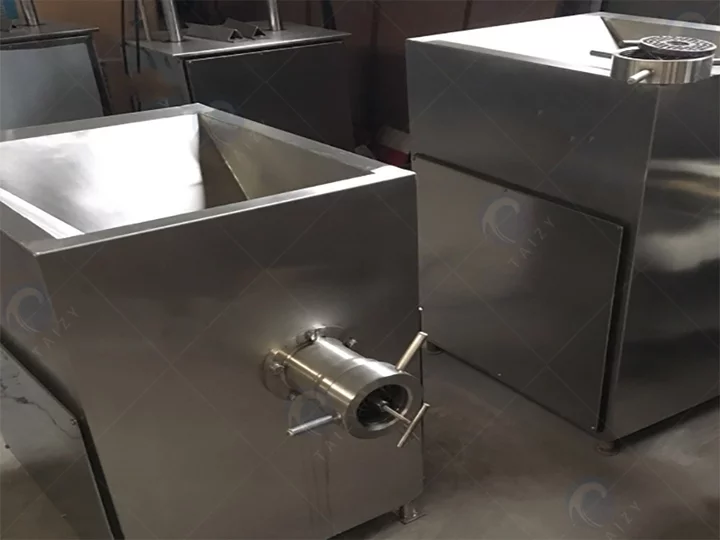
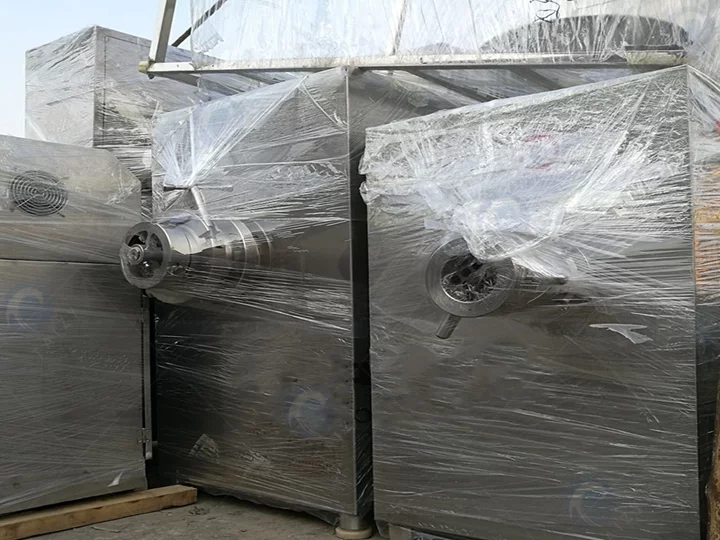
- 철저한 건조. 세척 후 모든 부품이 완전히 건조되었는지 확인하여 녹이나 세균 번식을 방지한 후 분쇄기를 재조립하십시오.
- 윤활. 원활하고 효율적인 작동을 위해 스크류와 기어박스와 같은 이동 부품에 식품 등급 윤활제를 바르십시오.
미트 그라인더의 매개변수
| 모델 | 용량 | 전력 | 크기 |
| TZ-100 | 500kg/h | 5.5KW | 980*550*900MM |
| TZ-120 | 1500kg/h | 7.5KW | 960*550*1080MM |
| TZ-160 | 2000-3000kg/h | 15KW | 1630*1100*1450MM |
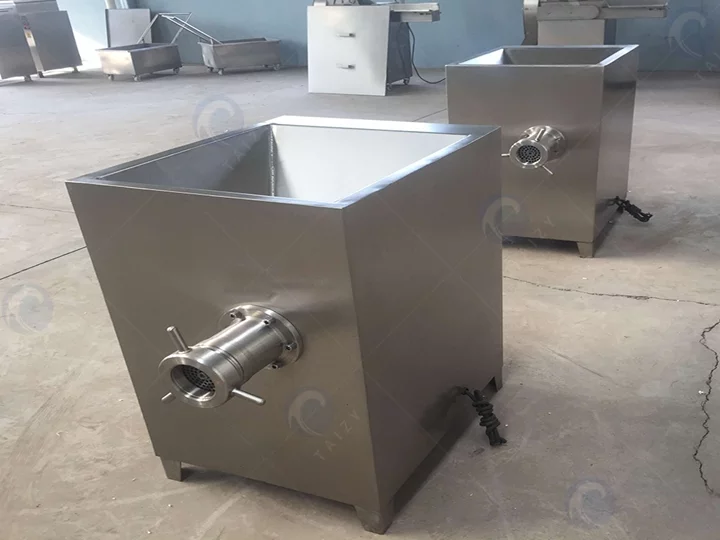
결론
우리의 고기 분쇄기 기계는 효율적이고 고품질의 고기 가공을 위한 신뢰할 수 있는 솔루션으로, 귀하의 비즈니스에 필수적인 도구입니다. 내구성과 성능을 위해 설계되어 다양한 고기 분쇄 요구를 정밀하고 쉽게 처리합니다.
또한, 우리 회사는 다양한 고기 가공 장비를 제공합니다. 오늘 저희에게 연락하여 더 알아보고, 견적을 요청하며, 귀하의 고기 가공 요구에 대한 최상의 솔루션을 탐색해 보세요!

